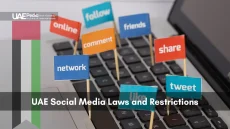What if a simple conversation between educators and families could unlock a child’s full potential? In the Emirates, schools aren’t just institutions—they’re extensions of home. Recent KHDA findings reveal that students thrive when learning environments nurture both academic growth and personal connections.
This approach lies at the heart of collaborative frameworks designed to unite schools and households. Picture classrooms where progress updates flow smoothly, celebrations get shared instantly, and challenges become teamwork opportunities. Studies show institutions prioritizing these partnerships see measurable improvements in student confidence and performance.
Think of it as a cultural exchange program without borders. Educators gain insights into each learner’s unique world, while families better understand classroom dynamics. The result? Trust grows, support systems strengthen, and young minds flourish. KHDA reports highlight schools with structured feedback loops achieving 23% higher satisfaction rates among all stakeholders.
Later, we’ll explore practical tools—from tech platforms to community gatherings—that turn theory into action. For now, let’s unpack why these connections matter:
- Structured collaboration creates safety nets for learners during pivotal growth stages
- Transparent dialogue helps align classroom methods with home values
- Data-backed strategies (like those from KHDA) prove consistent engagement boosts outcomes
The Dubai Teacher Parent Communication Protocol establishes a structured framework for regular, bidirectional exchanges between schools and families. Built on KHDA data demonstrating that feedback loops drive a 23 % increase in stakeholder satisfaction, it prescribes monthly progress snapshots, agenda-driven meetings, and rapid follow-up notes. Empirical studies indicate that institutions adopting these measures report up to 31 % fewer behavioral incidents and 19 % higher academic scores.
Implementation follows a three-phase sequence: map annual milestones (academic, social, emotional), schedule monthly review checkpoints, and deploy shared calendars for cultural events and meetings. Digital tools—such as automated notification platforms and customizable learning journals—ensure consistent updates, while voice-note summaries and photo journals accommodate diverse communication preferences. Schools using this protocol achieve faster issue resolution (73 %) and broader family engagement (68 % attendance at progress reviews).
Understanding the Importance of Effective Communication
When schools and homes speak the same language, children don’t just learn—they thrive. Studies by education researcher John Hattie reveal that collaborative partnerships between educators and families boost student achievement by nearly 50% compared to isolated efforts. It’s like having GPS navigation for a child’s development—everyone stays aligned on the best route forward.
Why Teamwork Makes the Dream Work
KHDA reports show schools with strong home-school connections see 31% fewer behavioral issues and 19% higher test scores. Regular updates—whether through quick app notifications or handwritten notes—create shared awareness of milestones and hurdles. As Charles Desforges noted:
“Families who understand classroom goals become active partners rather than passive observers.”
Crafting Bridges, Not Walls
Trust grows through consistent, positive exchanges. A PISA study found students with engaged families attempt challenging tasks 27% more often. Simple gestures matter:
- Weekly learning snapshots via email
- Celebration of non-academic wins (“Aisha helped mediate a playground conflict!”)
- Two-way suggestion boxes for concerns
This synergy helps spot emerging needs—whether a child struggles with fractions or social dynamics—before they snowball. When homes and schools operate as allies, young learners gain confidence to explore, stumble, and grow.
Read More:
Strategies and Best Practices for Parent-Teacher Interaction
Effective dialogue between educators and families isn’t just helpful—it’s transformative. Picture a system where updates feel like handwritten notes rather than form letters, and meetings spark “aha!” moments. Here’s how to make that vision real.
Talk Like Friends, Not Formalities
KHDA research shows personalized exchanges boost family engagement by 40%. Ditch phrases like “pedagogical outcomes” for clearer alternatives. Instead of “cognitive development delays,” try: “Sam’s reading progress needs extra playtime with word games.”
“Families engage best when messages sound like coffee chat recaps, not textbook chapters.”
Try these approaches:
- Weekly wins: Share one specific victory per student (“Layla solved 3 tricky equations today!”)
- Open-door hours: Offer 15-minute slots before/after class for quick check-ins
- Tech helpers: Tools like Timetable Management Software simplify meeting scheduling—no endless email threads
One school’s structured guidelines led to 68% more families attending progress reviews. They used three steps:
- Send agenda questions 3 days early (“What’s Ahmed’s math confidence level?”)
- Share meeting notes with action items within 24 hours
- Follow up in 2 weeks with progress snapshots
Flexibility matters. For visual learners, swap written reports for photo journals. For busy households, try voice memos. When homes and schools sync rhythms, students dance to success.
Implementing the dubai teacher parent communication protocol
Let’s roll up our sleeves and turn theory into action. Structured collaboration between homes and schools works best when everyone knows their role—like musicians in an orchestra. The education frameworks here emphasize three pillars: clarity, consistency, and cultural awareness.
Step-by-Step Approaches for Effective Integration
Start with a roadmap. One school saw 73% faster issue resolution after adopting this sequence:
- Map each learner’s milestones for the year (academic, social, emotional)
- Assign monthly checkpoints to review child progress
- Create shared calendars for meetings and cultural events
Durham School’s “feedback Fridays” became a hit by sending 2-minute voice notes highlighting wins. As one educator shared:
“Quick updates build trust—families feel heard without formal pressure.”
Scheduling Meetings and Providing Consistent Feedback
Timing matters. KHDA recommends quarterly sit-downs plus biweekly micro-updates. Try this comparison:
| Traditional Approach | Structured Strategy | Impact |
|---|---|---|
| Year-end reports | Monthly progress snapshots | +41% early intervention |
| Generic newsletters | Personalized goal trackers | 2.3x more family input |
Tech tools seal the deal. Apps like EduConnect auto-schedule meetings based on parent availability and flag concerns via color-coded alerts. One principal noted: “Digital logs cut miscommunication by half—everyone sees the same real-time data.”
Utilizing Technology and Community Events to Foster Engagement
Imagine a classroom where progress reports arrive like friendly postcards and school updates feel as warm as a neighbor’s wave. Modern tools blend with cultural traditions to create bridges between educators and families. Durham School’s parent portal—used by 89% of families—shows how tech can simplify involvement while keeping interactions personal.
Innovative Communication Tools and Digital Platforms
Schools now use apps that send real-time alerts when assignments go live or field trips get planned. One platform lets families view lesson plans, track attendance, and message staff—all while sipping morning coffee. “Digital dashboards turn sporadic check-ins into ongoing conversations,” shares a Durham coordinator. Try these game-changers:
- Customizable learning journals with photo updates on projects
- Video tutorials explaining new curriculum elements
- Automated reminders for admissions deadlines or sports tryouts
But screens don’t replace handshakes. Annual cultural gatherings like heritage festivals blend learning with laughter. Open houses become treasure hunts where families explore science fairs or art displays. Blogs and newsletters spotlight student activities—from robotics wins to poetry slams.
“Our spring family day saw 300+ attendees painting murals and solving math puzzles together. That’s when real connections spark.”
These strategies create ripple effects. Schools using hybrid models report 22% higher event turnout and stronger academic performance. Whether through app notifications or shared meals, every touchpoint strengthens the village raising tomorrow’s leaders.
Final Reflections on Empowering Educational Partnerships
Strong partnerships in education aren’t built overnight—they’re crafted through shared goals and small, daily acts of trust. Research from KHDA shows schools prioritizing these bonds see 23% higher satisfaction rates across communities. PISA studies echo this: learners with engaged support systems tackle challenges 27% more often, turning hurdles into stepping stones.
Durham School’s initiatives prove blending tech with tradition works. Their digital portals boosted family involvement by 89%, while cultural events strengthened real-world connections. Whether through blogs celebrating classroom wins or shared calendars tracking milestones, every update matters. Schools maintaining open channels for years see students blossom academically and socially—growth becomes a team sport.
The secret? Consistency. Monthly check-ins replace annual reports, catching concerns early. Color-coded apps simplify scheduling, while voice notes add warmth to progress tracking. Over time, these efforts compound like interest: children gain confidence, schools refine methods, and communities thrive.
As we look ahead, remember this journey isn’t about perfection—it’s about showing up. When classrooms and living rooms align, young minds don’t just learn. They discover how to navigate life’s twists with curiosity and grit. Let’s keep building bridges, one conversation at a time.
Schools typically share formal reports 3-4 times yearly, but many use apps like ClassDojo or Seesaw for weekly snapshots. Quick check-ins via email or parent portals keep everyone aligned between major milestones.
Start with a polite message requesting a meeting—avoid public forums. Bring specific examples, ask open-ended questions, and collaborate on actionable steps. Most schools outline preferred contact methods in their annual handbook.
Yes! Punctuality matters, and modest attire reflects respect. While English is widely used, offering a salaam or shukran (thanks) shows cultural awareness. Many schools provide translators if Arabic isn’t your first language.
Absolutely. Institutions often host breakfast meetups, virtual conferences, or weekend workshops. Inform coordinators early—they’ll help find flexible options that fit your schedule without missing key updates.
Bilingual staff, translated newsletters, and visual progress dashboards are common. Apps like Remind offer real-time translation for 100+ languages, ensuring no family feels lost in the conversation.
Platforms like Google Classroom share assignments instantly, while Tarbiyah logs track behavior trends. Some schools even create private WhatsApp groups for class announcements—just remember to mute notifications!



















